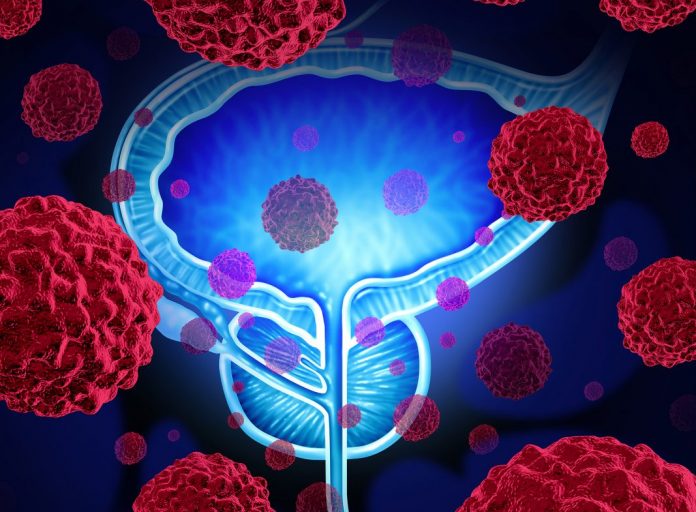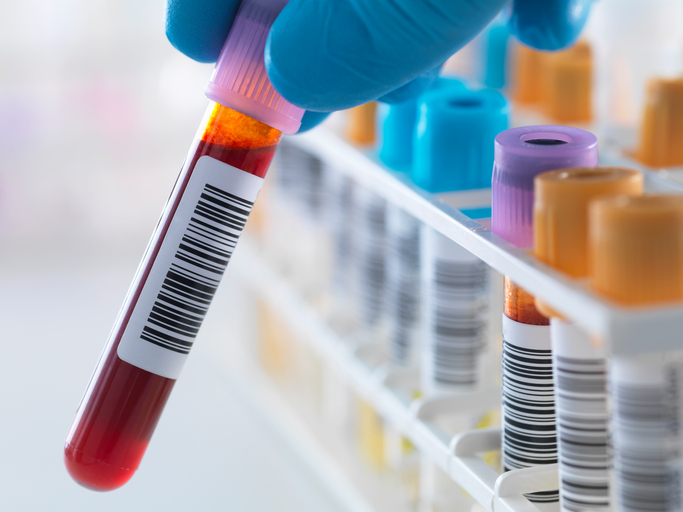
Men with treatment-emergent neuroendocrine prostate cancer (t-NEPC) could benefit from human epidermal growth factor receptor (HER)2 testing and treatment with trastuzumab deruxtecan (T-DXd), suggest researchers from the Washington DC Veterans Affairs Medical Center and The George Washington University School of Medicine.
They report in the Annals of Internal Medicine, the case of a 60-year-old man diagnosed with high-volume metastatic prostate cancer in March 2019, who, after several failed treatments, has responded well to T-DXd.
Senior Author Maneesh Jain, MD, told Inside Precision Medicine that previous work by his group and others has shown variable incidence of HER2 immunoexpression in prostate cancer with higher HER2 expression correlating with advanced grade group and The American Joint Committee on Cancer (AJCC) stage, but no data exist about HER2 expression in t-NEPC.
Prior clinical trials with HER2-targeted therapies for metastatic castration-resistant prostate cancer (mCRPC) have failed to show meaningful responses, and trials of the HER2 antibody–drug conjugate (ADC) T-DXd, which recently received a tumor-agnostic approval for treatment of patients with unresectable or metastatic HER2-positive solid tumors, did not include patients with mCRPC.
Despite this, a lack of other treatment options led Jain and colleagues to test their patient for HER2 immunoexpression.
The man, whose prostate biopsy showed poorly differentiated adenocarcinoma, initially received androgen-deprivation therapy and docetaxel but his prostate-specific antigen level trended up, and imaging showed progression.
During the next four years, he was treated consecutively with six additional lines of therapy, which each elicited a transient response followed by rapid progression. He subsequently developed symptomatic brain metastases and had craniotomy with tumor resection followed by radiotherapy. Histopathology was consistent with transformation to t-NEPC, a particularly aggressive subtype of the already difficult-to-treat mCRPC.
Molecular testing revealed a low tumor mutational burden but immunohistochemistry (IHC) for HER2 showed strong expression in both the primary prostate tumor and the brain metastasis using a modified prostate cancer-specific scoring system developed by Jain and colleagues.
“We developed a prostate cancer specific HER2 IHC scoring system that assesses the intensity of HER2 staining, and not the percentage of expression,” he explained. “This approach accounts for the high intratumoral heterogeneity of HER2 expression in prostate cancer and correlates with Gleason score/grade group and American Joint Committee on Cancer stage, differing from the HER2 IHC scoring used in breast or gastric/gastroesophageal cancers.”
In February 2024, the patient started off-label treatment with T-DXd. After four cycles, there was a 57% overall reduction in tumor volume across sites, including the brain. In addition, computed tomography showed stable bone metastases.
Furthermore, his blood counts and lactate dehydrogenase level normalized, and his performance status improved, despite being recommended for palliative hospice care several months earlier.
Although scans in July 2024 showed slight progression in two bone metastases, as of October 2024, his visceral and brain metastases remain stable, and clinically he is doing well, the researchers report.
“Given the challenges in managing mCRPC, we believe that HER2 testing by IHC should be considered for all patients with mCRPC to identify those who may benefit from the FDA’s tumor-agnostic approval of T-DXd,” said Jain.
He added: “IHC is the most effective method for detecting HER2 expression in this scenario, as HER2 mutations and amplifications are rare in prostate cancer and are therefore not typically identified through next-generation sequencing.”
However, he pointed out that although the current patient showed strong expression of HER2 on the modified prostate cancer-specific scoring system, he would have been scored as low based on current guidelines relying on breast cancer data, leading to denial of beneficial treatment with T-DXd.
Jain believes that the case report, which is the first to document a response to an HER2-targeted ADC in heavily pretreated t-NEPC, “underscores a potential new targeted treatment option for mCRPC, including tNEPC, where precision therapies are limited.”
He said: “We hope this will encourage clinicians to test for HER2 IHC in mCRPC to identify patients who may benefit from T-DXd, following the FDA’s recent tumor-agnostic approval for HER2-positive [IHC 3+] solid tumors.”
Washington D.C. Veterans Affairs Medical Center is now the primary site for the upcoming multicenter CaRPET (Castrate Resistant Prostate Cancer Enhertu Therapy) trial. The phase II clinical trial will evaluate the response to anti-HER2 ADCs in mCRPC.
“This trial is crucial as previous studies of T-DXd did not include prostate cancer patients,” said Jain. “We aim to assess the response to T-DXd at various levels of HER2 immunoexpression using our scoring system to establish the expression threshold needed for treatment response in prostate cancer.”
The trial involves eight sites across the U.S. including seven Veterans Affairs sites and George Washington University.









